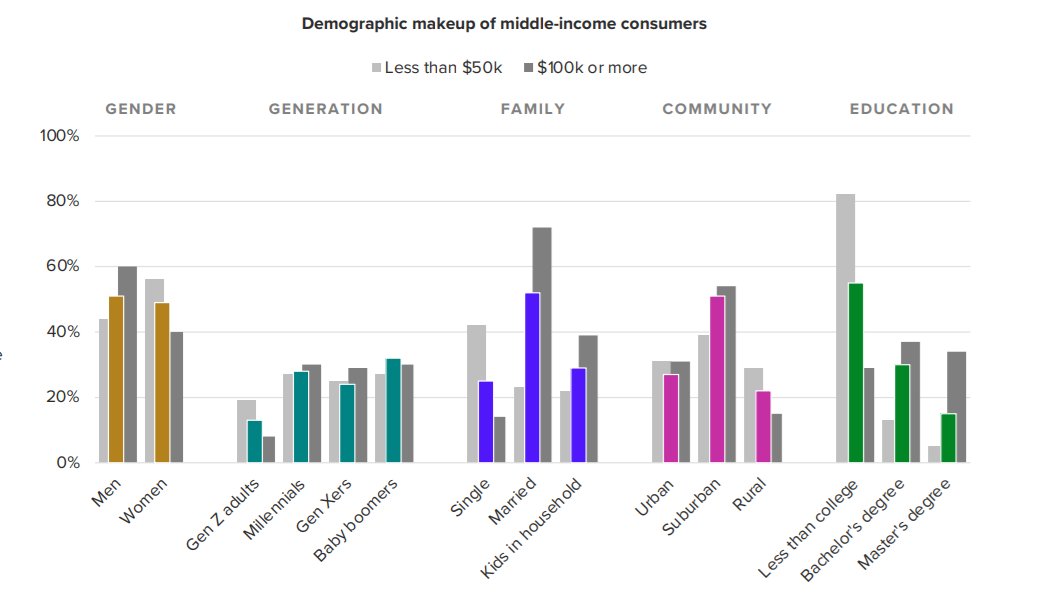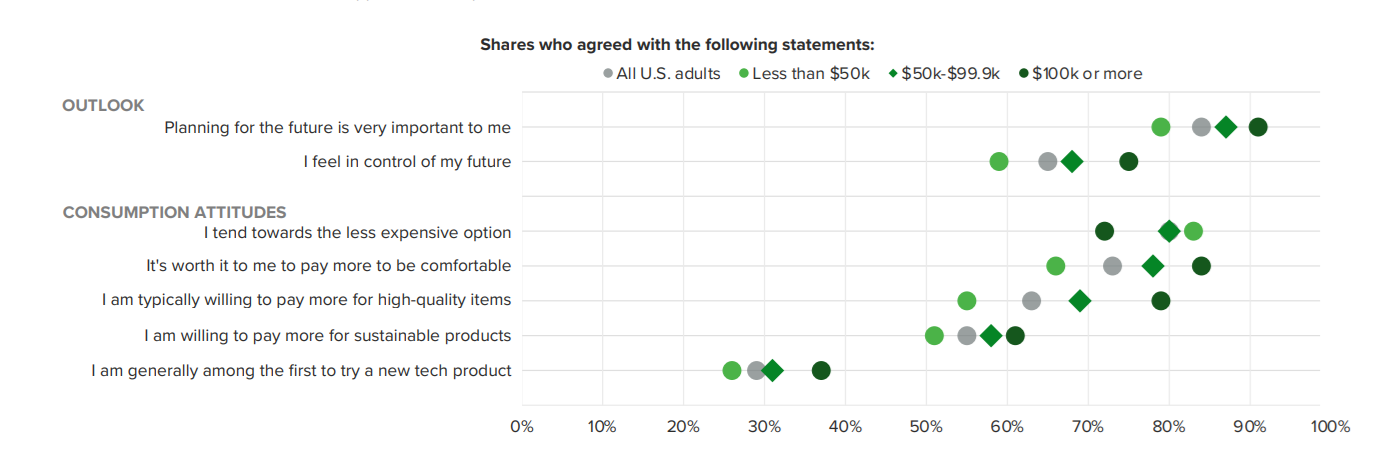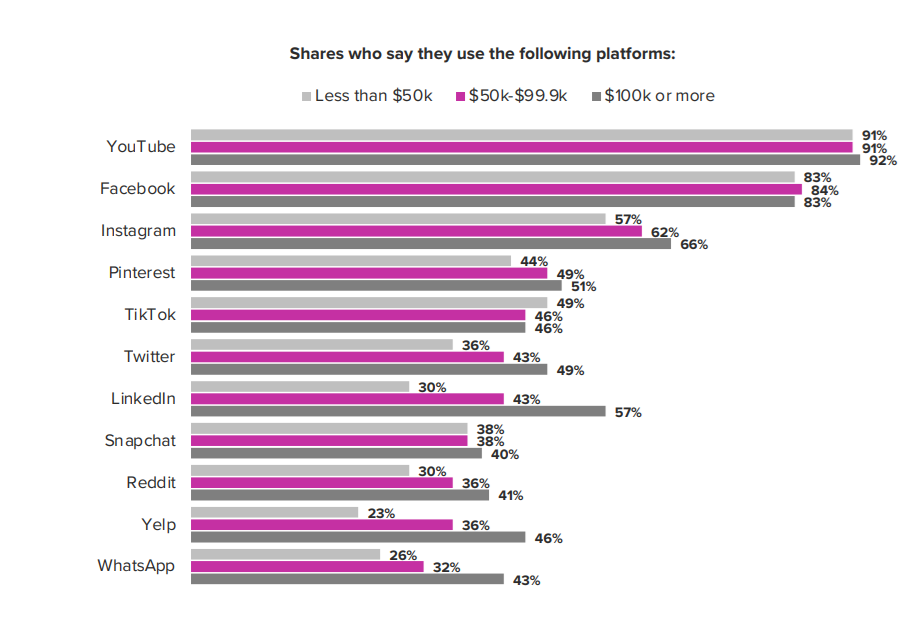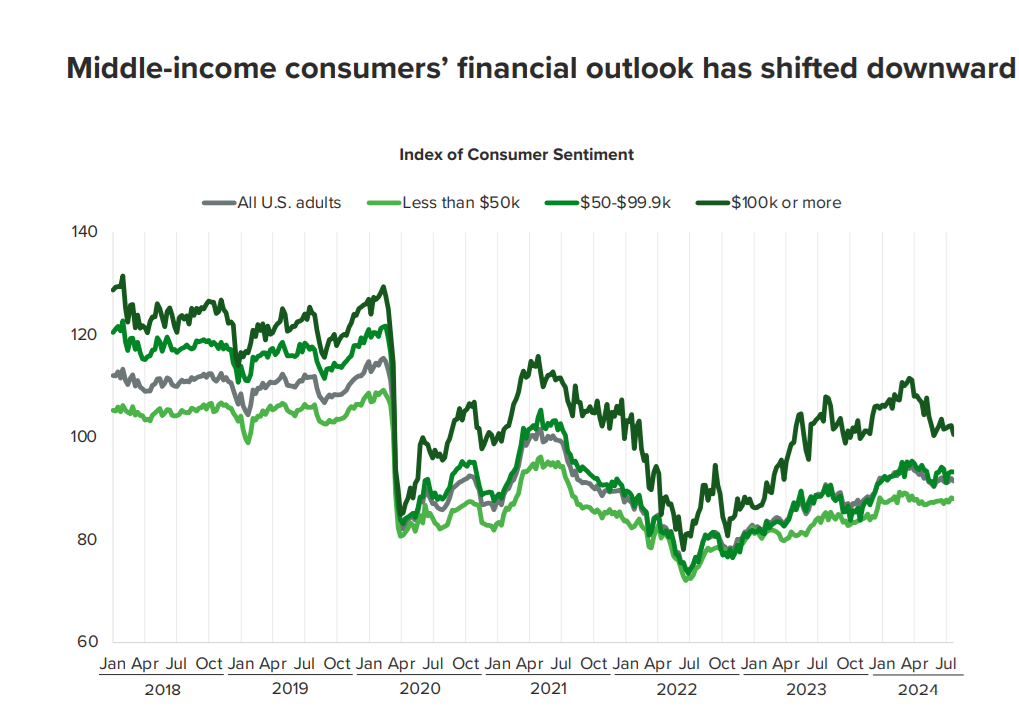By the Numbers: What PR pros should know about the habits of middle-income earners
How this vital demographic thinks, spends and scrolls.

Debating about what constitutes “middle class” is a great American past-time right up there with baseball. For the purposes of this article, let’s call mid-income earners those who have household incomes of $50,000 to $99,999. Those who make more, we’ll call high-income earners, and those below, low-income. Easy enough.
According to the U.S. Census, the median household income in the U.S. was $74,850, the most recent year for which data is available, making your typical American a middle-income earner. So they’re a key constituency for most organizations that work with consumers.
Morning Consult’s analyst report, “All About Middle-Income Consumers,” examines data collected monthly from about 2,200 U.S. adults between October 2021 and May 2024. Here’s what they learned – and what PR professionals should keep in mind.
Who are middle-income earners?
Your prototypical middle-income earner is a married Baby Boomer living in the suburbs who does not have a bachelor’s degree, according to Morning Consult.

Some of these items are logical: married households generally have higher incomes than single households, either due to the dual income or a stay-at-home spouse’s domestic labor that allows the other partner to work longer hours, or at a higher-paying job. Baby Boomers, who are at this point in their lives likely to be living off a combination of Social Security payments, pensions and private savings, are expected to be in the middle rather than Xers and Millennials, who may be earning more while still in the active workplace, or Gen Z, who are at the beginning of their careers.
What matters to them
When it comes to psychographics, it’s unsurprising that middle-income earners fall between the two income extremes. Depending on the question, they sometimes lean more toward one side or the other.
For instance, “I tend toward the less expensive option” had mid-income earners just a few points below low-income earners, showing a frugal mindset despite rising income. But mid-income earners were closer to high-income households when it came to the statement of “planning for the future is very important to me,” outranking the low-income cohort by nearly 10 points.

Mid-income earners are more likely to pay for sustainable products than your average American consumer, and also to pay more for high-quality products.
What they watch and scroll
One of the most important things for PR pros to know is where these consumers spend their time, so they can best determine how to reach that demographic with targeted messages.
Morning Consult notes that both Facebook and YouTube are so ubiquitous in modern American life that there is virtually no difference among use rates based on income. But the middle-income bracket is more likely to use social media platforms Instagram, Reddit, Pinterest and X than low-income earners – though less likely to use TikTok.

When it comes to streaming, mid-income earners are far more likely to use Netflix than any other paid streaming service (which is also true of all other income brackets). Just over half subscribe to Hulu, while just under half also have a Disney+ subscription. But if you’re looking for platforms with uniquely high-earner demographics, you should look to Spotify, Max or Apple TV+.
How they feel about the economy
Morning Consult noted that before the pandemic, middle-income consumer sentiment tended to be close, though just below, that of high-income earners. However, since the tumult of the pandemic and ensuing inflation, that sentiment has shifted to be much closer to lower income folks.
“This is in part due to high-income consumers pulling ahead in the post-pandemic economy, where they’ve been more insulated from the effects of inflation and their larger share of equities have greatly benefitted from investment gains,” the report notes.

What it means for PR pros
This data paints a complex, nuanced view of the middle in America. They’re a group that feels less sanguine about their future since the pandemic and feels buffeted by inflation. But they also are focused on planning and maintaining control over their own futures. They prefer the less expensive options, but they will still engage in little splurges, like streaming services and sustainable products.
While it’s impossible to draw sweeping conclusions about such a large, diverse group, this information can help PR professionals approach middle-income earners with messaging that’s frugal yet aspirational, that helps them prepare for the future and hope for better.
Allison Carter is editor-in-chief of PR Daily. Follow her on Twitter or LinkedIn.







